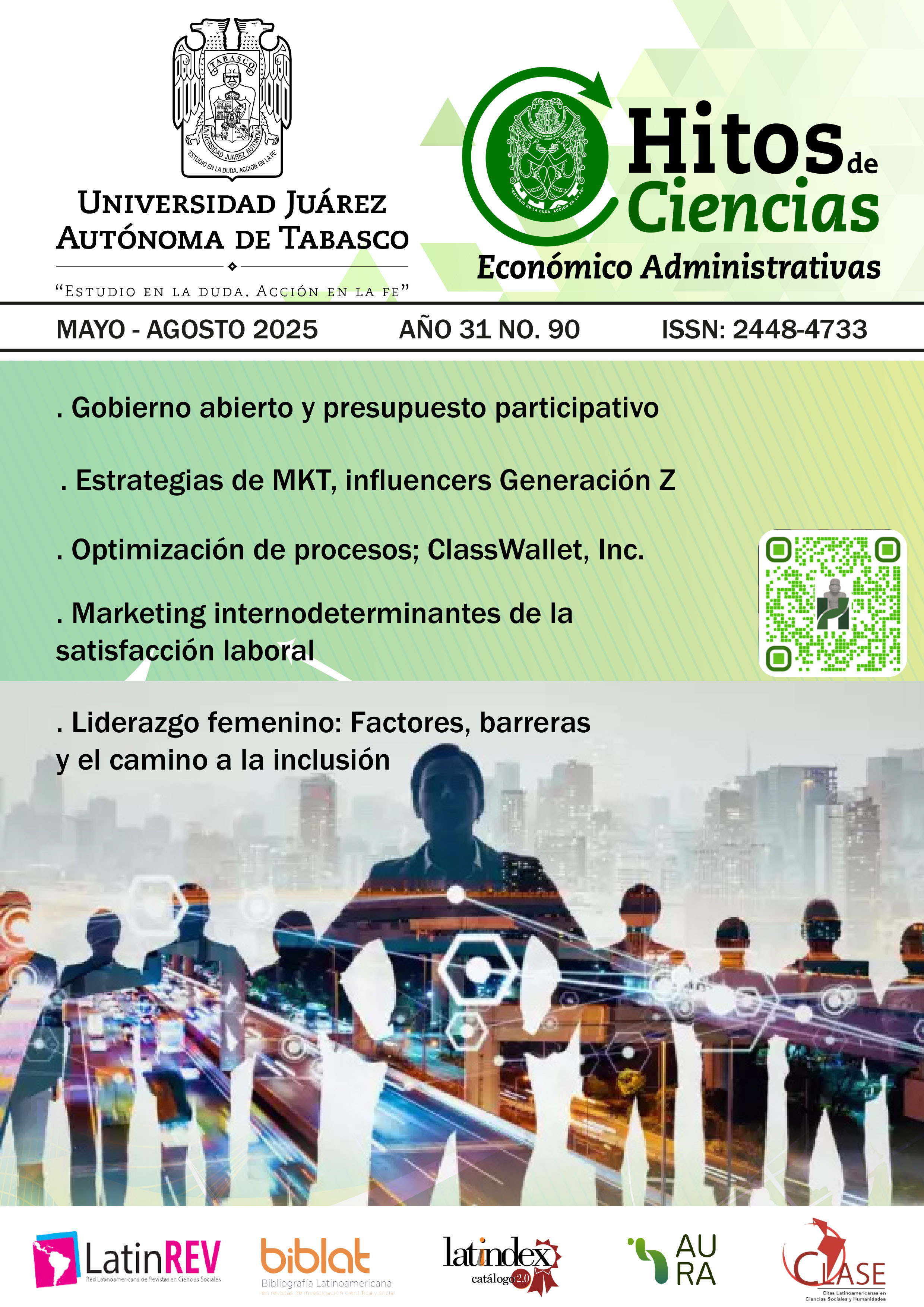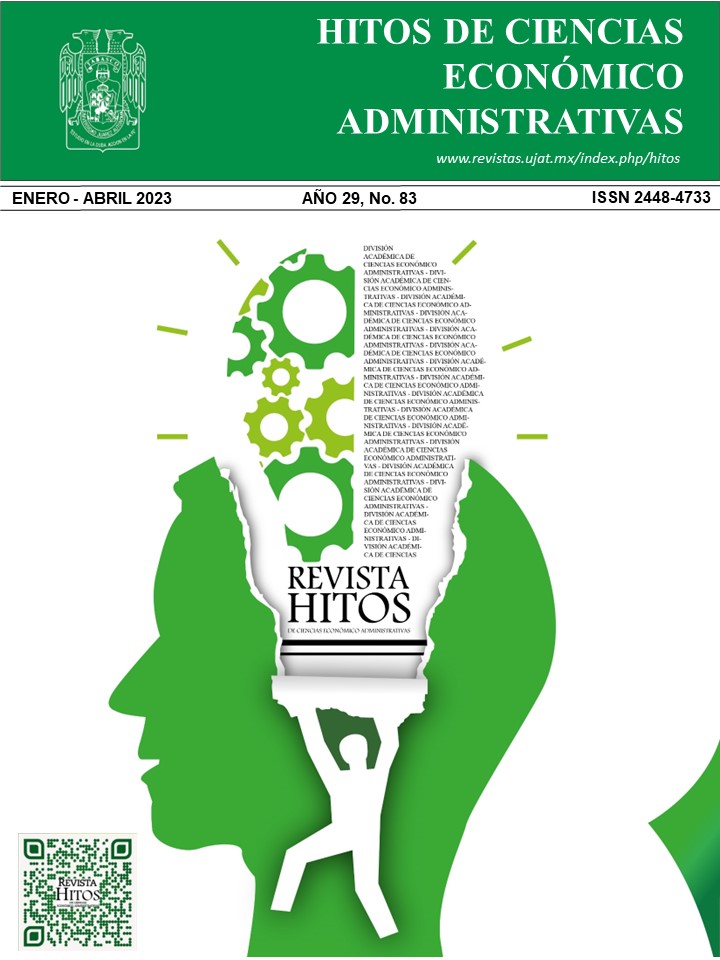Determination of the Economic Impact of a Traditional Celebration in El Espinal, Oaxaca, Mexico
DOI:
https://doi.org/10.19136/hitos.a29n83.5542Keywords:
Impact, Economy, Traditions, Culture.Abstract
OBJECTIVE: To determine the economic impact generated by a traditional isthmian “Vela” in El Espinal, Oaxaca, Mexico.
MATERIAL AND METHODS: A cost-benefit analysis was carried out, through the review of financial documents and a survey applied to 120 members, referring to the expense used in the organization and assistance of a traditional Vela.
RESULTS: The investigation allowed us to know the economic impact generated by a Vela, an amount that gets to $2,056,456.80, of which 91.37% comes from the indirect effect, while only 8.63% is derived from the direct effect. Consequently, the indirect effect is relatively greater than the direct one.
CONCLUSIONS: The economic impact generated by a traditional Vela has a significant effect on the municipality of El Espinal. Most goods and services required to organize and carry out this festivity are provided by formal or informal local commerce and brought about by people from the region. These festivities have also had a great influence on the creation and preservation of trades related to ornament, clothing, food, music, among others.
Downloads
References
Aguilar, R. (12 de diciembre de 2019). La cultura y el PIB. El economista. https://bit.ly/3dkmuvl
Arriaga, R. & González, C. (2016). Efectos económicos del sector cultural en México. Análisis Económico, XXXI (77), 219-246. http://bit.ly/3WqZNaF
Benavente, J. M. & Grazzi, M. (2018). Impulsando la economía naranja en América Latina y el Caribe. Banco Interamericano de Desarrollo. https://bit.ly/3zOnfVt
Castillejos, L. (2019, junio, 03). Sobre la fundación de El Espinal: Antecedentes y fundación. Corto Mortaja. https://bit.ly/3cHMGPU
Chaca, R. (30 de abril de 2017). Mayo, mes de las tradicionales velas istmeñas en Oaxaca. Quadratín Oaxaca. https://bit.ly/3PYsyHt
Contreras, E. (2004). Evaluación social de inversiones públicas: enfoques alternativos y su aplicabilidad para Latinoamérica Eduardo Contreras. CEPAL. https://bit.ly/3BLhoSp
Coordinación de Desarrollo Turístico. (2016). Afluencia turística en Ciudad Guzmán. https://bit.ly/3qHJ4ky
Devesa, B. F. (2012). Repercusiones económicas y sociales de los festivales culturales: el caso del festival internacional de Cine de Valdivia. EURE Santiago, 38(1), 95-115. https://bit.ly/3LwuaHL
Figueroa, P. (Noviembre de 2014). Propuesta definitiva del modelo de medición del impacto socio-económico de la actividad de ferias y eventos en Galicia. http://g4plus.uvigo.es/wp-content/uploads/2019/02/Ferias_Definitivo-Modelo-Medici%C3%B3n-Impacto.pdf
González, A. G. (2020). Economía del siglo XXI: Economía naranja. Revista de Ciencias Sociales, XXVI (4),450-464. http://bit.ly/3T1ThE9
H. Ayuntamiento Municipal Constitucional El Espinal. (2019). Plan de Desarrollo Municipal 2019-2021. https://bit.ly/3DJQrjt
Hernández, J. S. (2019). El ajedrez de la Economía Naranja en Colombia. Economía Creativa, (12), 82-102. https://doi.org/10.46840/ec.2019.12.04
Hernández, R. & Mendoza, C.P. (2018). Metodología de la investigación. Las rutas cuantitativa, Cualitativa y Mixta. McGraw-Hill.
Hierro, J. y Fernández, J. (2013). Activos culturales y desarrollo sostenible: la importancia económica del Patrimonio Cultural. Política y Sociedad, 50(3), 1133-1147. https://bit.ly/3Lfsz8V
Instituto de información Estadística y Geográfica de Jalisco. (2006). Estudio de derrama económica. Zapopan. https://bit.ly/3BhUaSg
Jiménez, H. (2015). Análisis del impacto socioeconómico de los eventos deportivos. (Tesis de licenciatura). Universidad de Extremadura, España. https://dialnet.unirioja.es/servlet/tesis?codigo=46166
Mudarra, A., Cárdenas, P. & Pulido, J. (2013). Aproximación al análisis del impacto económico del turismo en Úbeda y Baeza tras su declaración como patrimonio de la humanidad. https://bit.ly/3BFRJKL
Oaxaca Mío. (s.f.). Fiestas Indígenas: Velas Istmeñas. https://www.oaxaca-mio.com/istmo/fiestas.htm
Palma, L., García, A. y Palma, M. (2014). La integración entre cultura y economía. El caso de las Fiestas de Primavera de Sevilla. Estudios de Economía Aplicada. 32 (1), pp. 287-308. https://bit.ly/3eXq3Iw
Perles, R. J. (2006). Análisis del impacto económico de eventos: una aplicación a fiestas populares de proyección turística. Cuadernos de turismo. https://dialnet.unirioja.es/descarga/articulo/2013201.pdf
Piedras, E. (20 de marzo de 2019). Cultura y creatividad en México, un sector más grande que el automotriz. https://bit.ly/3BKbmBx
Sánchez, G. (s.f.). Impacto económico de la cultura, metodologías. Átala y gestión cultural. https://bit.ly/3BF235D
Valdés, L. (14 de junio de 2018). El México de ayer y hoy en la fiesta Vela San Juan. Milenio. https://bit.ly/3BkrRnZ
Downloads
Published
Issue
Section
License
Copyright (c) 2023 Luis Enrique López Tolentino, María Soledad Ramírez Flores, Lilián Hernández Nolasco

This work is licensed under a Creative Commons Attribution-NonCommercial-ShareAlike 4.0 International License.
As a requirement for the manuscript, the author is requested to provide the Copyright Assignment Letter, so that the Journal has the publication rights and to avoid plagiarism.
PLAGIARISM POLICIES
The Editorial Board of the Journal HITOS DE CIENCIAS ECONÓMICO ADMINISTRAIVAS has the authority to reject in the review process any manuscript that does not have adequate citation in the documents consulted in its scientific research work, which can be considered as plagiarism behaviors. Likewise, the referees carry out the plagiarism review using specialized software, such as iThenticate, among others.
COPYRIGHT POLICIES
Authors who have publications in the journal accept the following terms: • At the time the manuscript is accepted, the author transfers the copyright to the Journal HITOS DE CIENCIAS ECONÓMICO ADMINISTRATIVAS.
- The authors may make additional agreements for non-exclusive distribution of the published version of the article (e.g., including it in an institutional repository or publishing it in a book) provided that the initial publication in this journal is indicated.
- Authors are allowed and recommended to publish their research work on the Internet (eg, institutional or personal files), which would allow more beneficial exchanges to increase the citation of the published work.
This work is licensed under Creative Commons Attribution-NonCommercial-NoDerivatives 4.0 International






